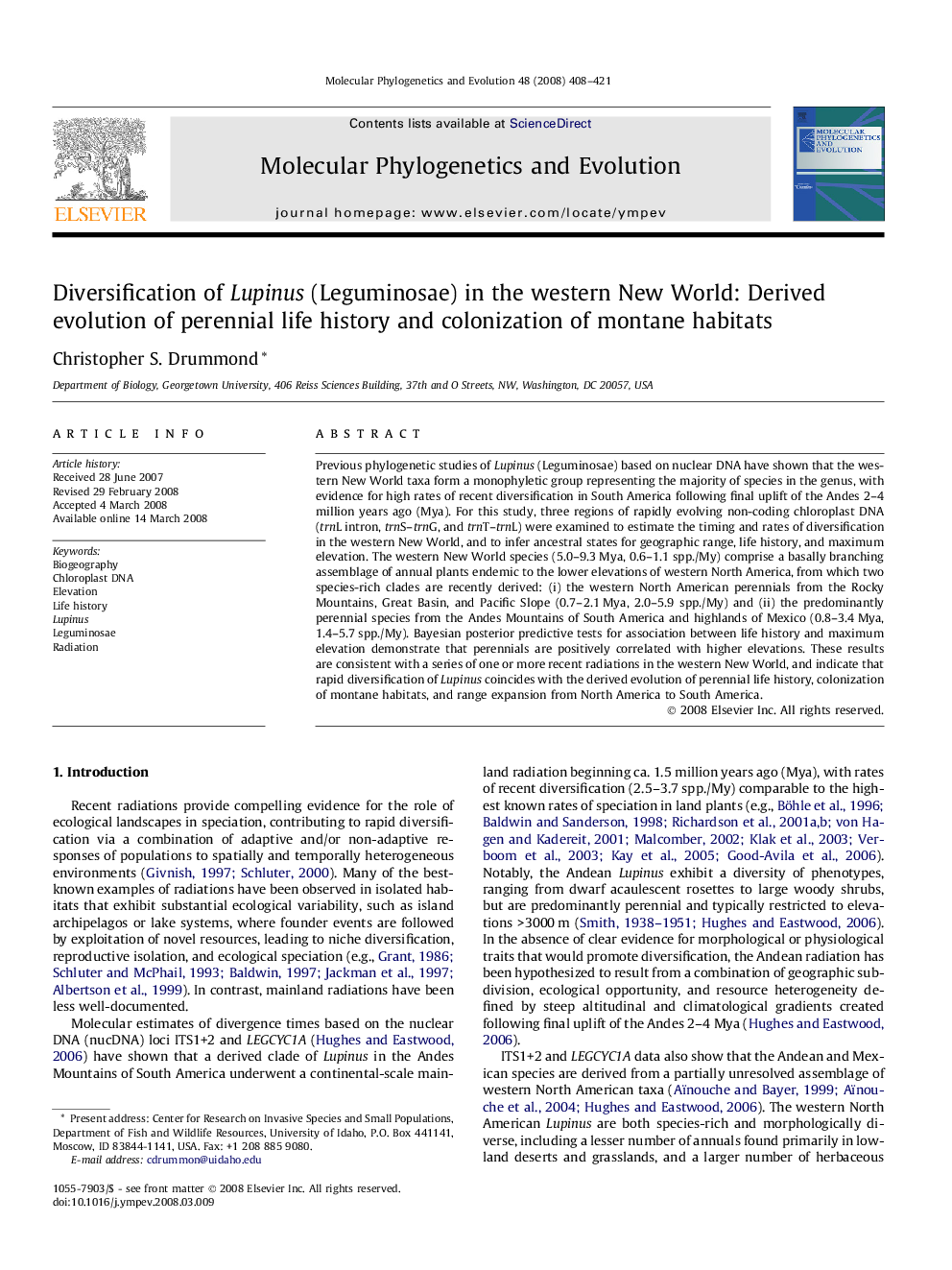| Article ID | Journal | Published Year | Pages | File Type |
|---|---|---|---|---|
| 2835072 | Molecular Phylogenetics and Evolution | 2008 | 14 Pages |
Previous phylogenetic studies of Lupinus (Leguminosae) based on nuclear DNA have shown that the western New World taxa form a monophyletic group representing the majority of species in the genus, with evidence for high rates of recent diversification in South America following final uplift of the Andes 2–4 million years ago (Mya). For this study, three regions of rapidly evolving non-coding chloroplast DNA (trnL intron, trnS–trnG, and trnT–trnL) were examined to estimate the timing and rates of diversification in the western New World, and to infer ancestral states for geographic range, life history, and maximum elevation. The western New World species (5.0–9.3 Mya, 0.6–1.1 spp./My) comprise a basally branching assemblage of annual plants endemic to the lower elevations of western North America, from which two species-rich clades are recently derived: (i) the western North American perennials from the Rocky Mountains, Great Basin, and Pacific Slope (0.7–2.1 Mya, 2.0–5.9 spp./My) and (ii) the predominantly perennial species from the Andes Mountains of South America and highlands of Mexico (0.8–3.4 Mya, 1.4–5.7 spp./My). Bayesian posterior predictive tests for association between life history and maximum elevation demonstrate that perennials are positively correlated with higher elevations. These results are consistent with a series of one or more recent radiations in the western New World, and indicate that rapid diversification of Lupinus coincides with the derived evolution of perennial life history, colonization of montane habitats, and range expansion from North America to South America.
